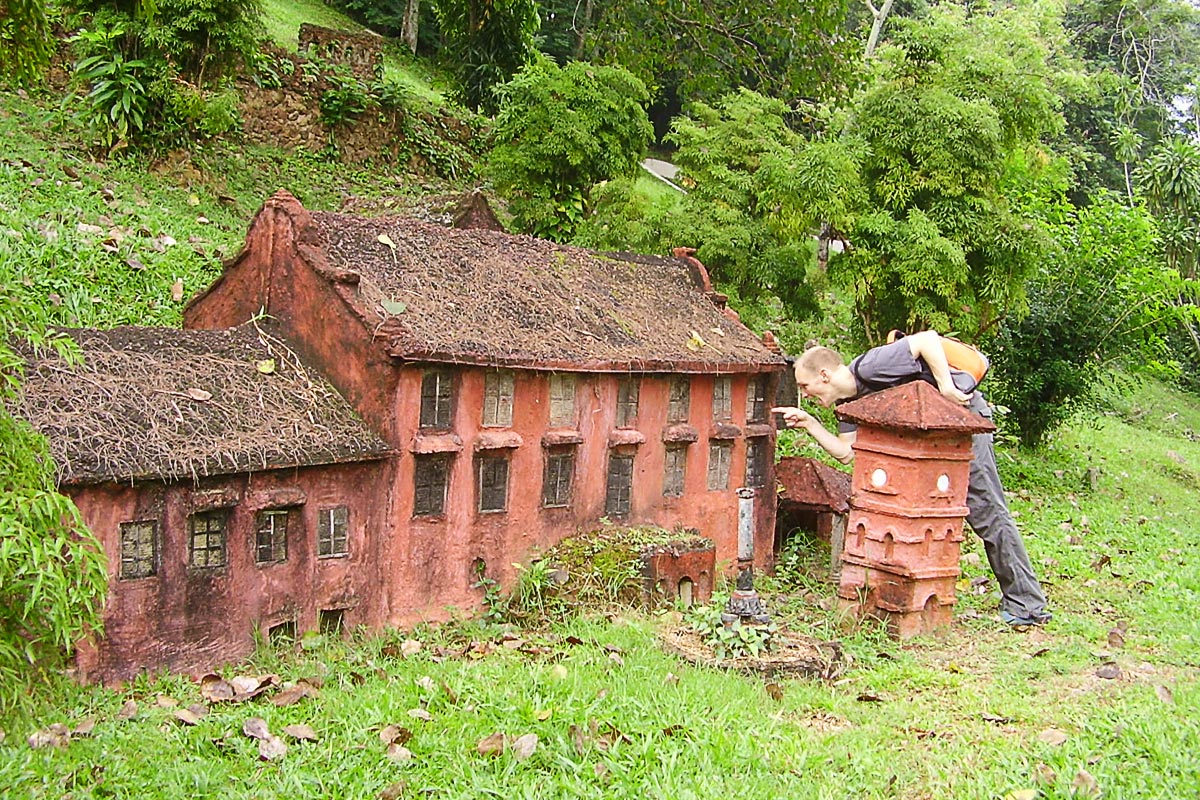
We poor sailors go skipping to the top
And the landlubbers lie down
Below, below, below
—Bascom Lamar Lunsford
Billions of years ago, two one-celled organisms came together for the first time to create a higher form of life. The precedent was set: life on Earth would always be instinctively drawn to such alchemical magic. Ever since then, the mixture of two or more elements has produced the most interesting new concepts and experiences.
Multiculturalism isn’t just a buzzword; it’s an inherent compulsion in our DNA.
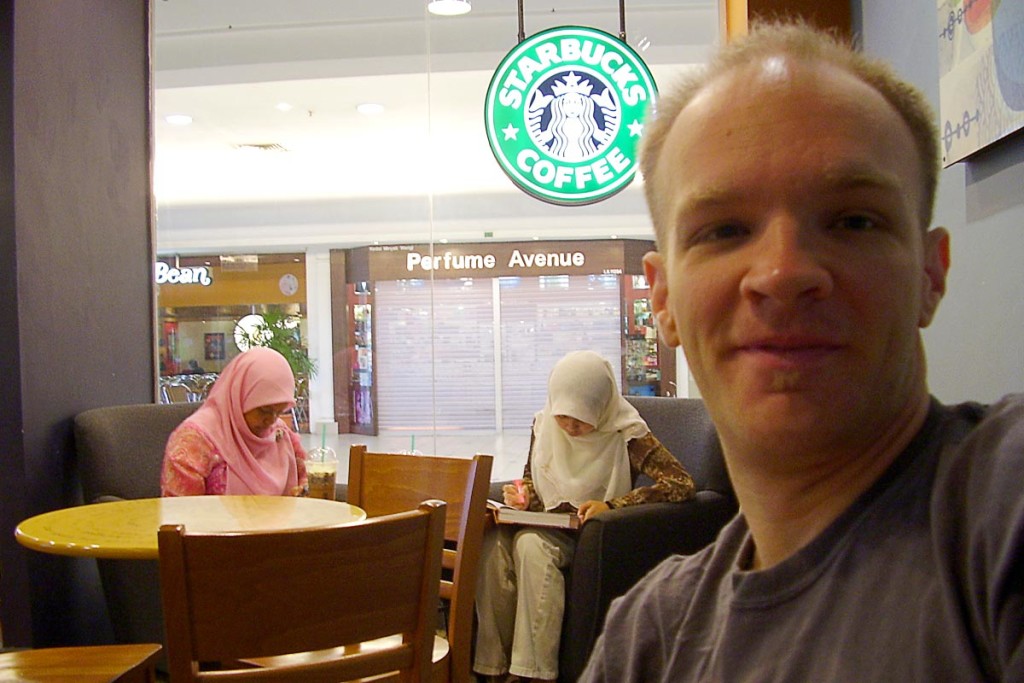
You can see this everywhere in Malacca, an old town on the coast of southern peninsular Malaysia, where there is clear evidence of the influence of several cultures everywhere you go.
Too bad that due to diabetic reasons, I had to cut my visit to Malacca short (see below). But at least I saw what I could before I had to flee.
Founded by Sumatrans, administered at different times by Portugal and the Netherlands and Britain (and occupied by Japan), and now including large populations of Chinese and Indian people, Malacca is a UNESCO World Heritage Site (along with George Town nearer the Thai border) full of buildings that reflect the different people who have set up shop here over the centuries.
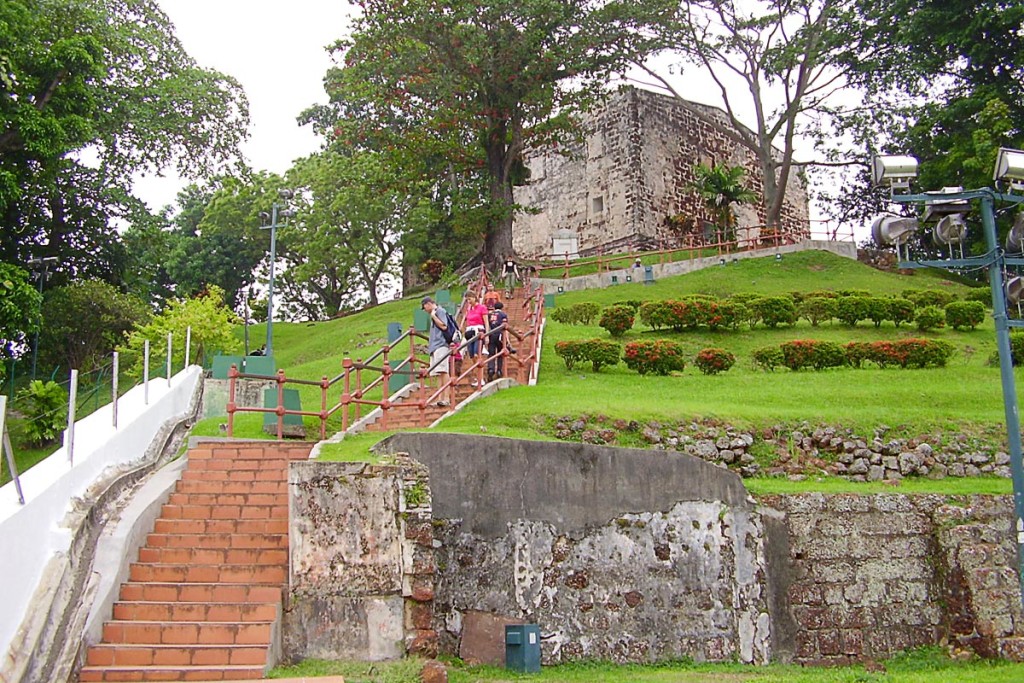
Bukit St. Paul, or St. Paul Hill.
In English, the name of this city (and the state it’s in) is Malacca but it has also gone by, variously, Melaka, Malaca, Malakka, and Malacka, which gives some taste of the rapidly changing phases that the area has been pulled through. Wandering the streets and sights of Malacca is a trip through history and a trip across continents.
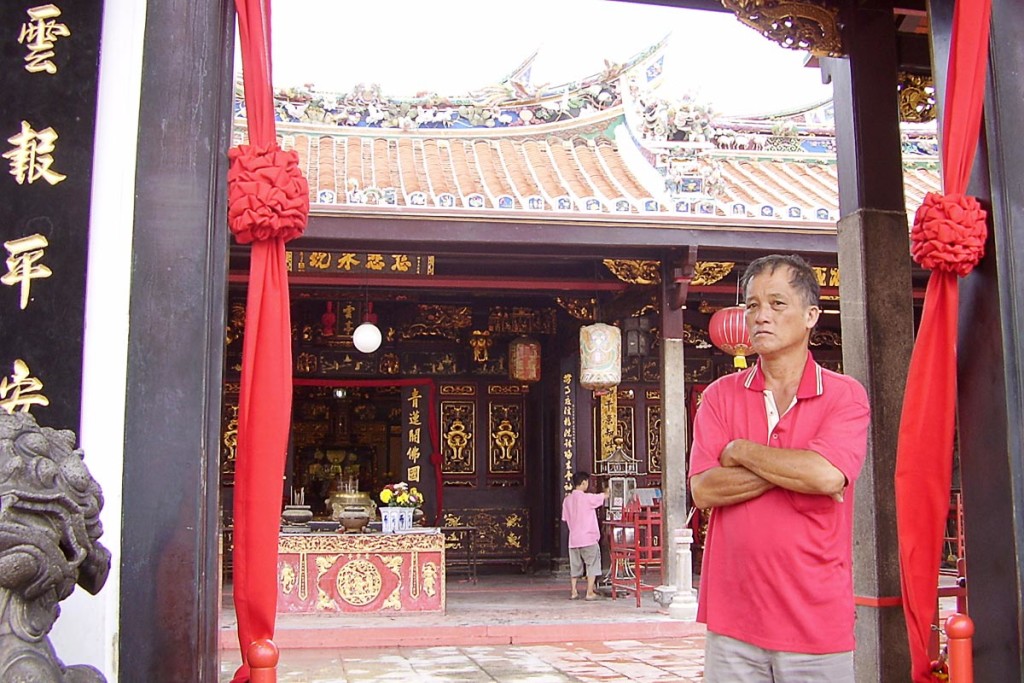
Lurking humorlessly outside a temple in Chinatown.
The Ghost Hotel
Masayo and I arrived here from Kuala Lumpur by bus on Day 59 of our trip and went searching for a hotel we’d seen in our Rough Guide.
After exiting the bus station in Malacca we were soon completely lost. Nothing was as it should be, according to our book. Fearing low blood sugar, I elected to stop at the only restaurant we’d seen, a tiny roadside place for locals, and have lunch. Studying a map, we realized the station had been moved since the guide was published and we were far from where we wanted to be.
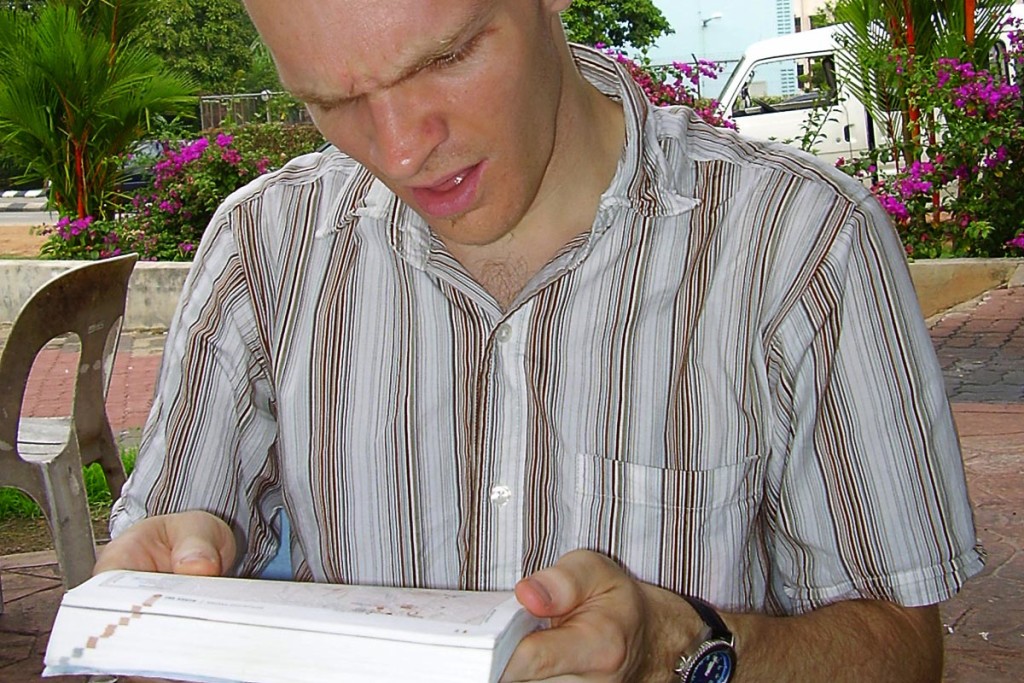
Betrayed by my Rough Guide.
Someone at the restaurant rustled up a taxi for us and we finally made it in the early evening light to the street our guesthouse was on.
We paid the taxi driver and he drove off – but in the spot where our hotel supposedly was there was only an overgrown lot with an old abandoned house on it. It was getting dark, and we were lost in an unfamiliar town with only a pathologically lying guidebook.
We walked up and down the street until we were positive it was correct. Finally, out of desperation and as darkness truly descended, we approached the abandoned house and saw a little side door, knocking on it almost as a joke.
But someone answered.
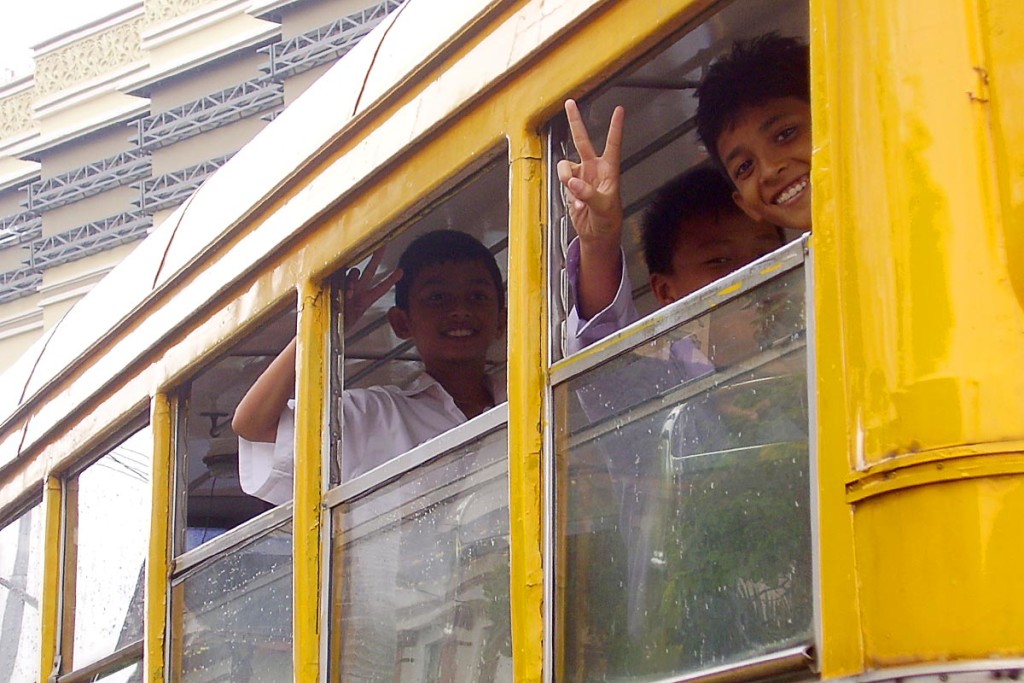
Although there was no sign on the building, and no lights on, this person was in fact able to check us in and show us upstairs to a room. It was dull but functional, with a nice big bed and the communal shower next door.
There were no other guests. I noticed some magazines on a coffee table in the hall: they were all dated 20 years ago.
It was all very spooky.
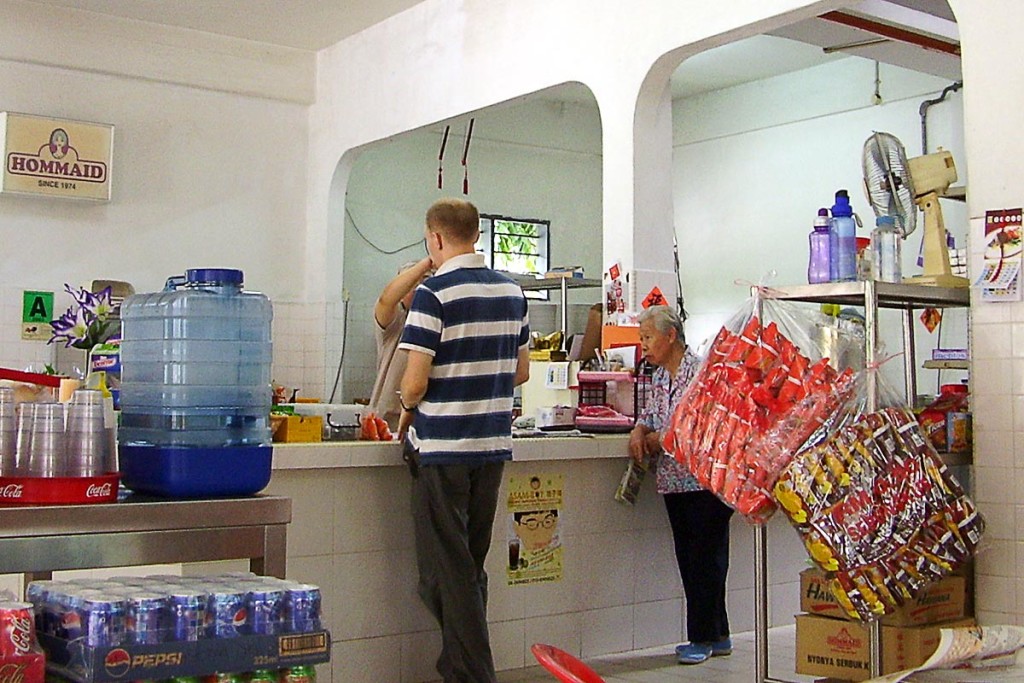
With some people, or possibly some figments of our imagination, downstairs at the Ghost Hotel the next morning.
Masayo and I started calling it “the ghost hotel”. We weren’t totally sure of anything about the place: was the woman who checked us in a ghost? Were we really the only people here? Were we here at all…?
I imagined telling someone about it the next day, and that they’d look horrified and say, “A bunch of tourists were murdered in that hotel twenty years ago, and it was torn down soon after; you couldn’t have stayed there last night!”
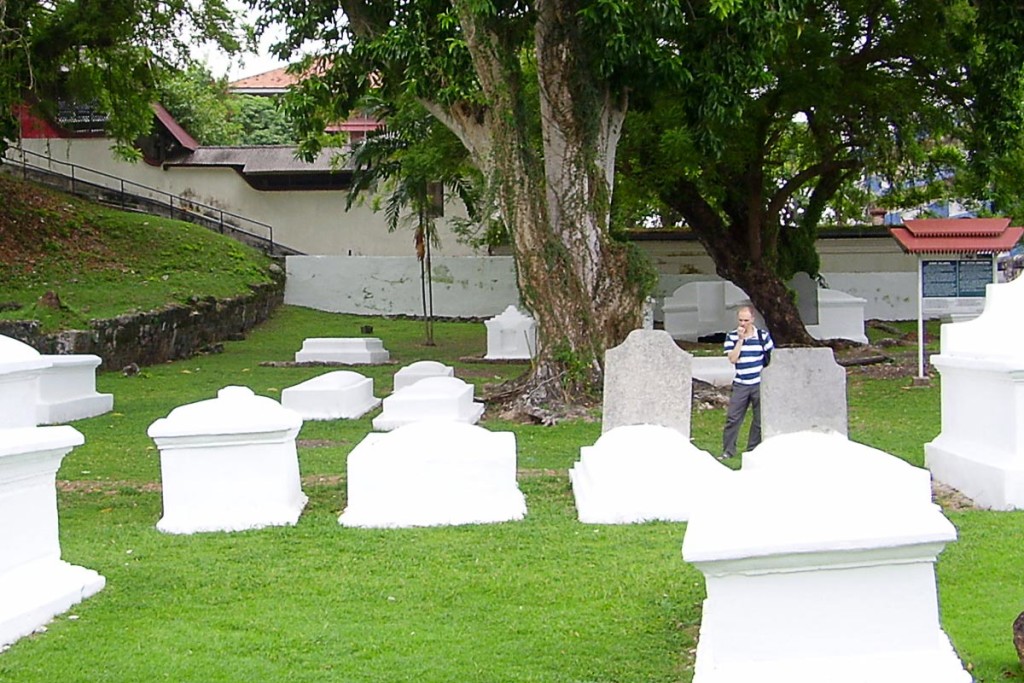 But in fact, the night passed uneventfully, and the next morning when we went down to check out we saw that the first floor was now open, with a restaurant and a sign out front and everything. Like a totally different place.
But in fact, the night passed uneventfully, and the next morning when we went down to check out we saw that the first floor was now open, with a restaurant and a sign out front and everything. Like a totally different place.
We checked out and got a room closer to the heart of Malacca.
Diabetes report: leaving insulin behind
As the bus from Kuala Lumpur neared Malacca I made a horrifying discovery: I’d left all my insulin behind in the drinks cooler at the i2inn Guesthouse back in KL.
All I had with me was my half-filled Humalog pen and a Lantus pen.
This was a terrible mistake, and meant that we would not be able to continue traveling around southern Malaysia that much: I had to get back to KL as soon as possible to rescue my precious supply. I calculated that I had enough with me for a few days, but didn’t want to push it much beyond that.
Keeping insulin cool in your hotel is a good idea in a country as hot as Malaysia, but don’t forget to take it with you! When packing and unpacking so often, as you do on a long-term trip like this, you can get complacent and forget even the most important thing you brought with you.
Sigh.
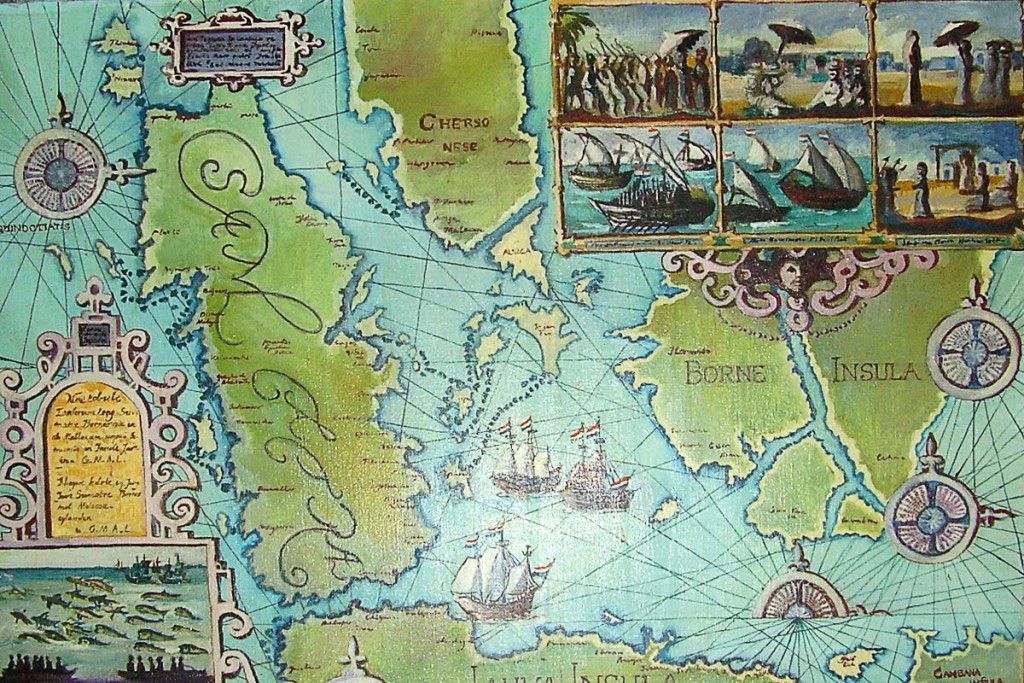
Antique Dutch map of Malacca.
The best of Malacca
In the center of Malacca are the main sights, including the strikingly red buildings that feature in every travel brochure of the town ever printed. The Stadthuys (Dutch for “City Hall”) and Christ Church stand in what is known informally as Red Square, giving a European (though unique) feel to the area.
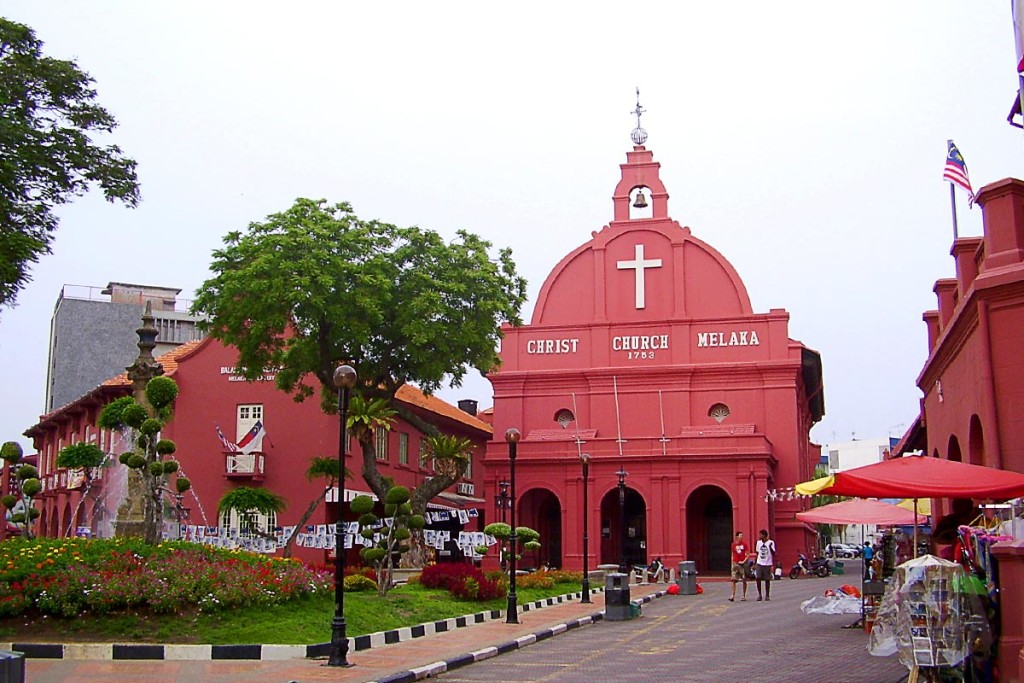
The classic view of Malacca. Here’s mine.
I had seen photos of these buildings but it’s always amazing to behold something with your own eyes that formerly seemed so far away, beyond your grasp. To a traveler, physically arriving at a dreamed-about location gives a sense of accomplishment – a “W” for the scorecard.
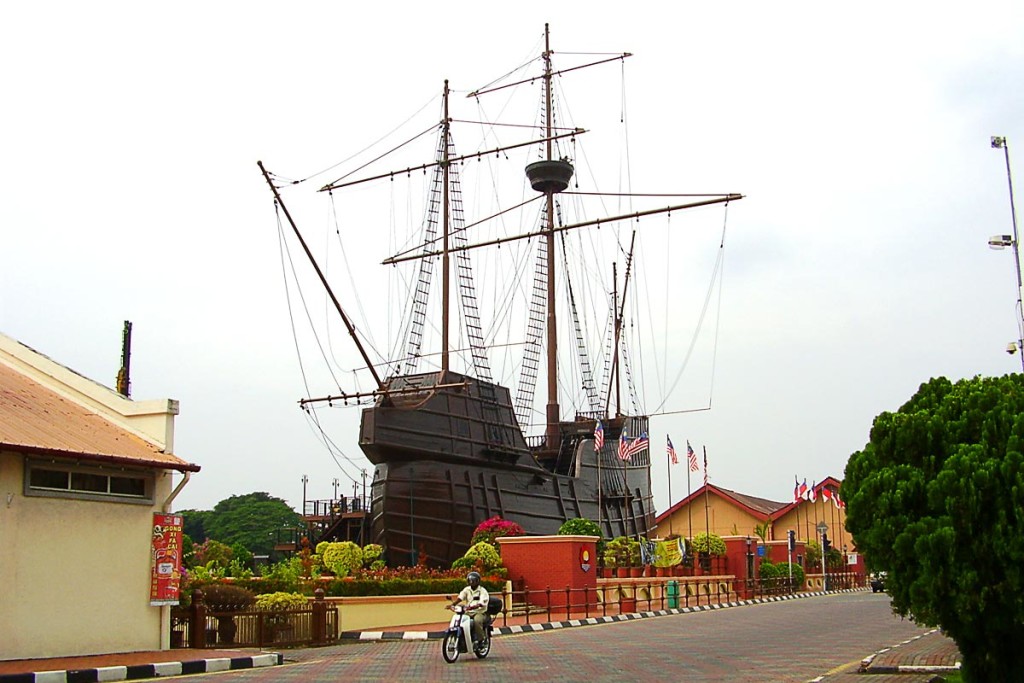
Malacca’s Maritime Museum is a replica of a real Portuguese ship that sank “by the will of God” in 1512.
Buckets of Bukits
“Bukit” means “hill” in Malay, and there are several of them in Malacca. Each has a different story, dramatically showing you what’s gone before.
Bukit St. Paul is right in the center of town, featuring several distinctive dark red Dutch buildings and the remains of an old church, with gigantic Portuguese gravestones propped up along the walls of the now open-air structure. You can walk right up to them and try to read their ancient, worn inscriptions.
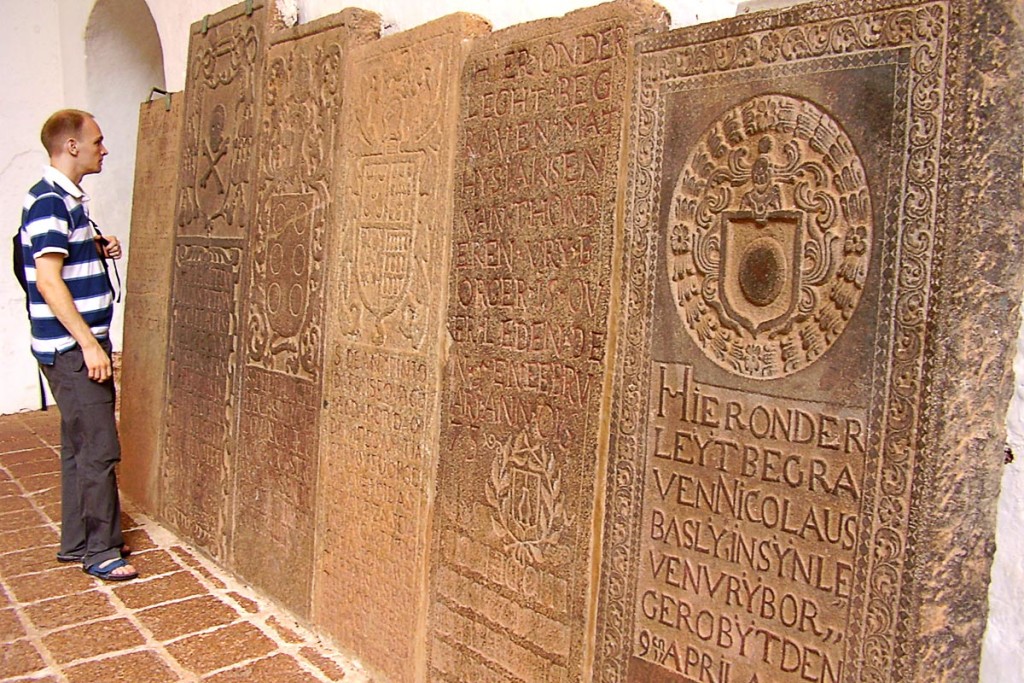
One day we uncharacteristically accepted a “touristy” offer: to take a tour of Malacca by tricycle taxi. Garlanded with flowers, our ride was pulled along under the leg power of our able driver, along public streets, just dodging buses and cars and ending up at Bukit Cina (China Hill), a large, tree-covered place with old graves, fruit falling off the branches onto the ground, and weed-threatened miniatures of buildings. Wandering around Bukit Cina, said to contain the largest Chinese cemetery outside China itself, was quite an experience.
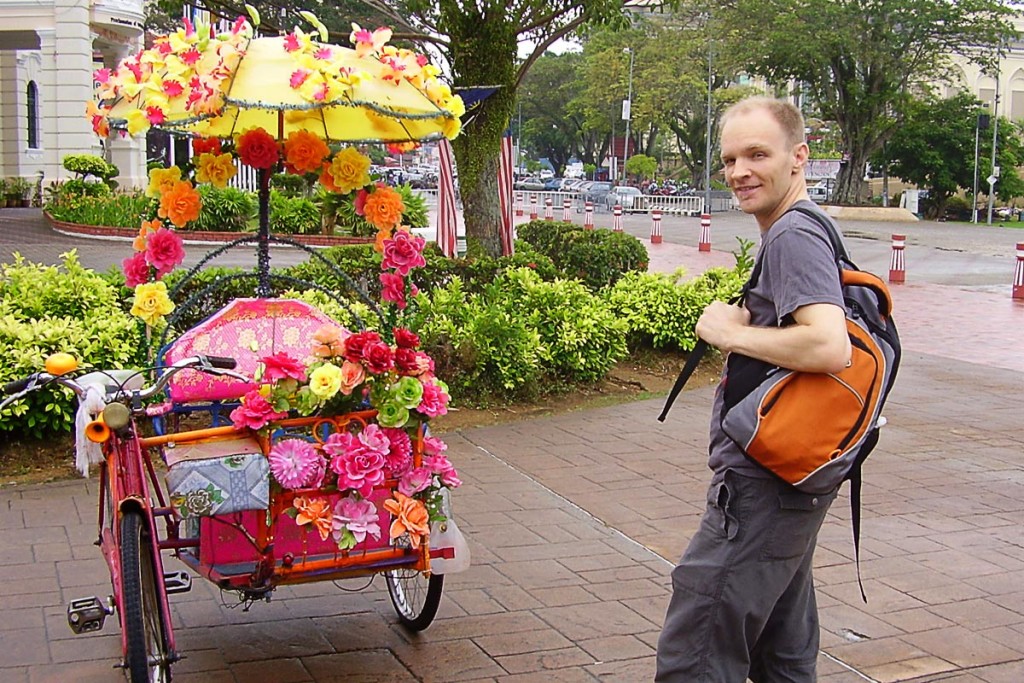
OK, maybe this is a tad touristy for a mode of transportation.
All part of the worldwide scope of Malacca’s many fascinating attributes.
Even in modern and multicultural Kuala Lumpur, I haven’t seen anything quite as international as Malacca so far on this trip. Malacca has a complex history, with visitors, invaders, and usurpers coming from all sides, and all have left their marks. The modern inhabitants too have altered the balance of Malacca in curious and inviting ways.
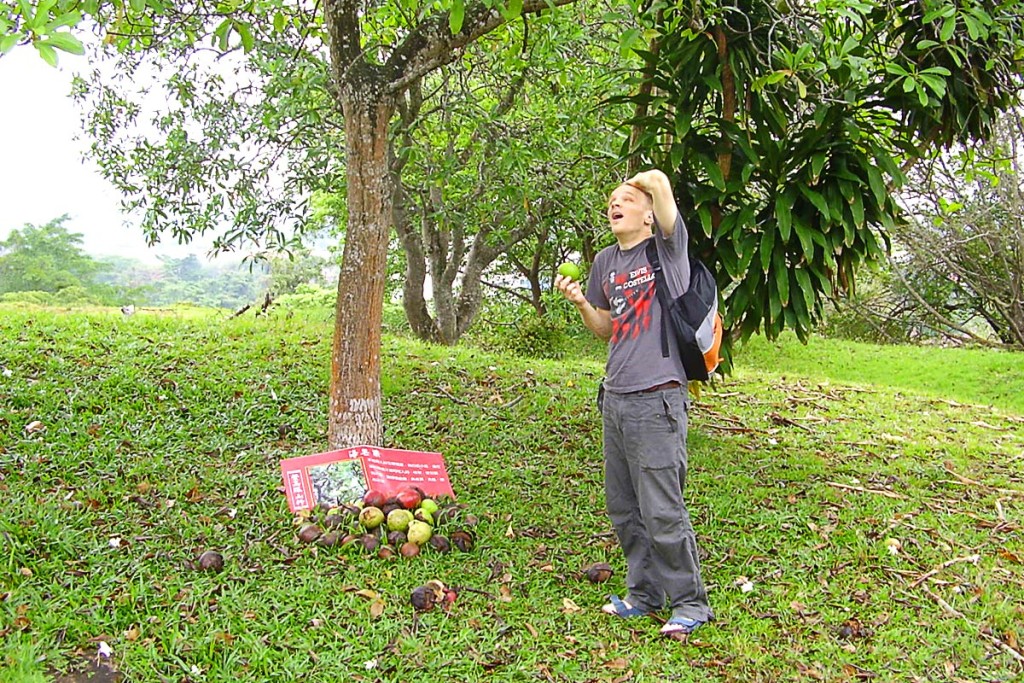
Bonked on the head by falling fruit: time to leave Malacca.
Diabetes report: reuniting with my insulin
We couldn’t get bus tickets for the day we wanted to return to KL, so we had to spend an extra night in Malacca and leave the next day, by which time I was getting quite worried about my insulin supply.
Fortunately we made it back, and the i2inn did indeed have my insulin, right where I’d left it. I breathed a sigh of relief, and vowed never to forget to pack my insulin when I checked out of a place ever again.
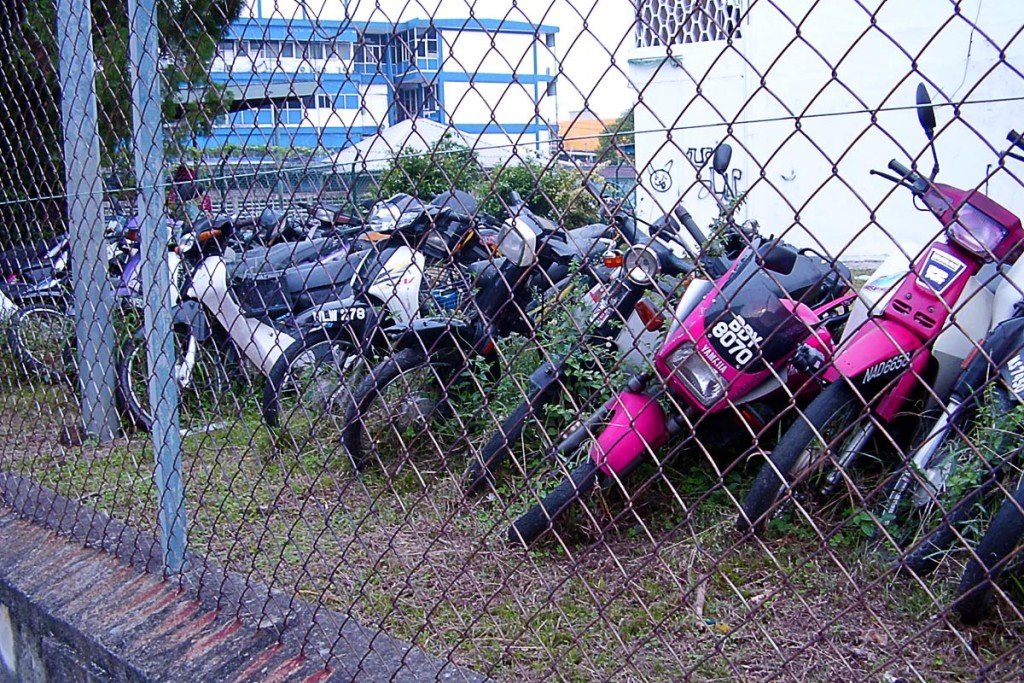
Sometimes my camera is drawn to decay and waste; i can’t help it. It’s so photogenic. Here, motorbikes are being reclaimed by the Earth.
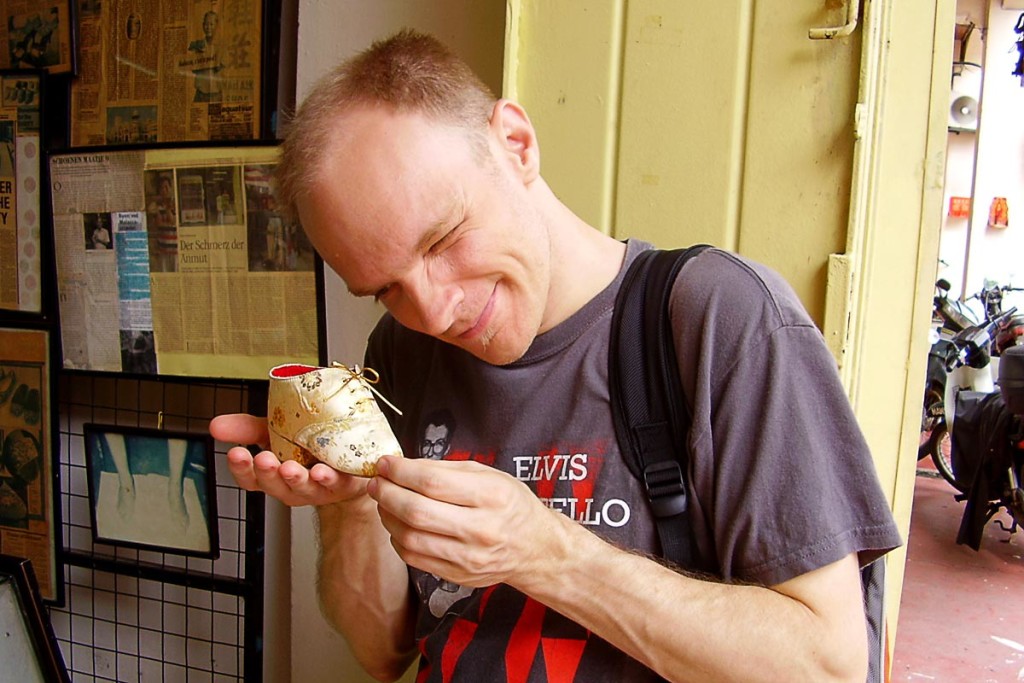
A real foot-binding shoe from the 1800s, at a shop in Malacca’s Chinatown.
It’s a rare treat to witness such a mélange of culture, people, and history. No wonder Malacca is a UNESCO World Heritage Site – it belongs to Malaysia, but truly reflects the best and worst of the relationship between Asia and Europe over the last several hundred years.
Thanks for reading. Suggested:
- Share:
- Read: Day 69: Visiting the Orang Asli deep in the Malaysian jungle
- Join: Free email newsletter (info and early video access)
- Support: Patreon (much earlier video access and other perks)

Support independent travel content
You can support my work via Patreon. Get early links to new videos, shout-outs in my videos, and other perks for as little as $1/month.
Your support helps me make more videos and bring you travels from interesting and lesser-known places. Join us! See details, perks, and support tiers at patreon.com/t1dwanderer. Thanks!
Want more? Get the free newsletter
Join us! Sign up to my email newsletter to receive updates, behind-the-scenes info,
and early links to my new YouTube videos before everyone else
